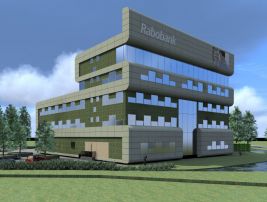About us
Oryx®,
What’s in a name ?
The name ORYX® refers to the antelope species that can survive in the extremely hot deserts by artificially raising its body temperature.
Three objectives of passive fire protection
- To prevent or limit the further spread of fire, smoke and heat
- To retain the stability of the building and the structure for as long as possible
- To guarantee safe escape routes for those inside the burning building
Four passive fire protection criteria
Stability
(R)
A building element exposed to fire and a mechanical load must sustain its support function. The structure should not collapse or bend out of shape too much because of the heat.
Integrity
(E)
When exposed to fire, a separating construction element must not show any holes or cracks allowing flames or hot gases to escape. The thermal radiation also has to meet certain requirements.
Thermal insulation
(I)
This criterion determines a construction element’s ability to keep the rising temperature on the other side of the heat source within the prescribed limits to minimise the risk of ignition.
Smoke resistance
(S)
A fire resistant separator has to contain smoke as well as fire. Smoke resistance is determined in a smoke leakage test at room temperature and at an elevated combustion gas temperature.


